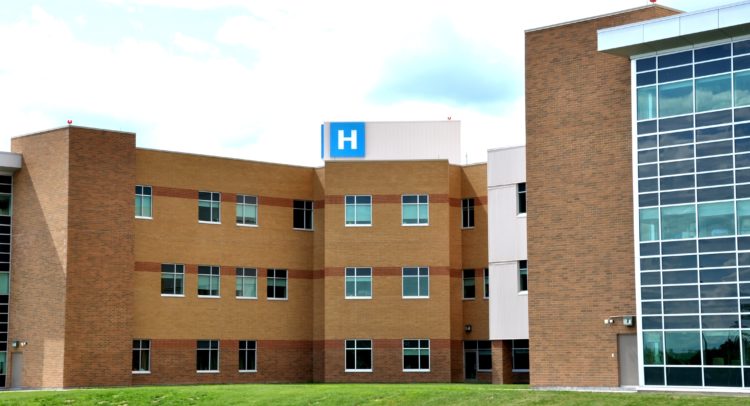Physicians Realty Trust (NYSE: DOC) and Healthpeak Properties (NYSE: PEAK) offer some of the highest yields among healthcare REITs. With investors looking for stocks that offer substantial dividend yields these days to mitigate elevated market risks, DOC and PEAK appear to be excellent picks. This could be the case, especially considering the relative resiliency of healthcare properties. However, there is a thesis to be made that both REITs appear to feature uninspiring growth and future total-return prospects. Accordingly, I am neutral on both names.
Pick the best stocks and maximize your portfolio:
- Discover top-rated stocks from highly ranked analysts with Analyst Top Stocks!
- Easily identify outperforming stocks and invest smarter with Top Smart Score Stocks
Are DOC & PEAK Safer Bets in the Current Market Environment?
Healthcare properties are built for a very particular objective (e.g., being operated as a hospital), while operators in the space seek stability. These dynamics result in these properties often being under long-term leases. Accordingly, REITs in the space like DOC and PEAK enjoy relatively resilient rent collections and predictable cash flows. This was demonstrated in their latest results.
DOC, whose properties are leased to physicians, hospitals, and healthcare delivery systems, reported second-quarter revenue growth of 17% to $132.2 million. The increase was mainly due to a larger asset base, but importantly, FFO/share came in at $0.27 compared to $0.26 last year, which means that the company’s property acquisitions were accretive to the bottom line on a per-share basis. Occupancy remained at 95%, which exhibits the REIT’s resilience against the ongoing challenges in the current environment.
Healthpeak Properties, whose asset base includes life science facilities, senior houses, and medical offices, also reported robust second-quarter results, with the REIT delivering same-property net operating income growth of 3.7% compared to last year. This was due to growth in the life science and medical office segments. Adjusted FFO/share also came in resilient, at $0.44, up four cents year-over-year.
In my view, both REITs should continue delivering robust results through the second half of this physical year, even as the underlying macro conditions have worsened since the first half. DOC’s weighted average remaining lease term stood at 10.3 years at the end of the quarter.
For PEAK, the weighted average remaining lease term of its life science and medical office properties stood at 6.4 years and 4.6 years, respectively. Combined with the critical nature of most of these properties, cash flows should remain rock-solid.
What about Their Dividend and Growth Prospects?
DOC and PEAK currently yield 6.1% and 5.2%, respectively. Both figures are quite juicy, especially considering that both REITs enjoy quality revenues. However, I would argue that both REITs feature somewhat soft dividend-growth prospects. While their multi-year leases shield them from volatile revenue fluctuations, they also deter meaningful rent escalations over time.
Take PEAK’s contractual lease escalators, for instance. Not surprisingly, 98.8% of the REIT’s annualized base rent (ABR) features a fixed escalator of 3.2%, leaving only 1.2% of ABR growth linked to CPI (the Consumer Price Index – i.e., the pace of inflation). This means that if the company’s expenses grow at a higher pace than 3.2%, all other things being equal, the company’s operating income will decline for the year. This is particularly true in the current environment, as expenses can easily grow at a much higher pace, considering the elevated inflation levels.
DOC’s and PEAK’s weak growth prospects are also reflected in their weak FFO/share and dividend-per-share expansions over the years. Between 2018 and 2021, DOC reported FFO/share of $1.08, $0.99, $1.05, and $1.02 in each year. Dividends-per-share amounted to $0.92 in each of these years, as the company evidently lacks any growth in FFO/share to support a meaningful dividend hike.
The same is rather similar with PEAK, whose FFO/share between 2018 and 2021 came in at $1.82, $1.76, $1.64, and $1.61. Further, dividends per share amounted to $1.48, $1.48, $1.48, and $1.20 in each of these years.
Yes, the top line remained resilient during this period due to PEAK’s multi-year leases, but with expenses growing at a higher pace, the REIT’s operating income was on the decline. With the payout ratio worsening each year, the company cut its dividend-per-share last year.
Is DOC Stock a Buy?
Turning to Wall Street, Physicians Realty has a Hold consensus rating based on one Buy and six Holds assigned in the past three months. At $18.07, the average DOC stock forecast implies just over 21.6% upside potential.

Is PEAK Stock a Buy?
In the case of Healthpeak Properties, the stock has a Strong Buy consensus rating based on nine Buys and three Holds assigned in the past three months. At $31.67, the average PEAK stock forecast implies a much larger 33.3% upside potential.

Takeaway – Mixed Feelings About These Two Stocks
DOC and PEAK come with multi-year leases attached to essential properties that can be practical during the current market environment. Specifically, their cash flows should remain solid despite the ongoing challenges in the market. Their yields also appear attractive and can increase investors’ margin of safety. However, they should not be blindly trusted. Both companies lack the prospects to meaningfully grow their dividends. The recent dividend cut from PEAK amid declining FFOs for years further embodies this argument.
With rates on the rise, I would require a higher yield spread from Treasury Bills to feel confident in buying DOC and PEAK. Should their yields approach 7.5% – 8.0%, they may be worth another look.



















